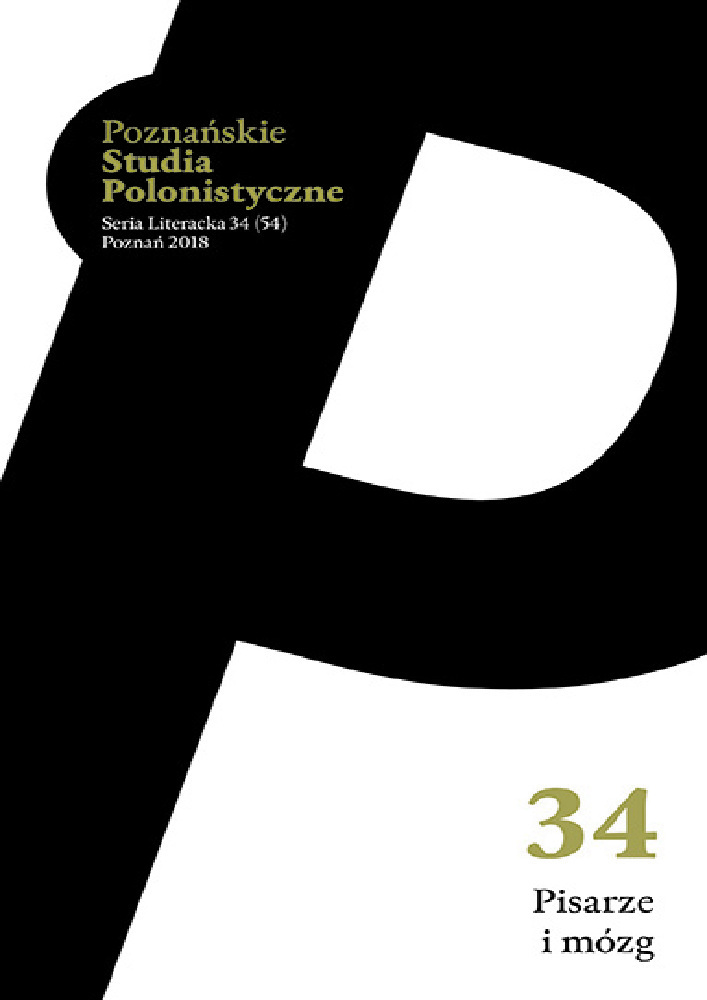Abstrakt
The subject of the translated article is irony understood as one of the formative elements of human speech. The author discusses the etymology of this idea, referring primarily to its definition formulated by Socrates, showing its relations with sarcasm, cynicism, meiosis and hyperbole. In terms of content, irony also has a moral element, since it is a challenge to traditional ideas, beliefs or shared cultural references. Irony is also a stylistic convention of poetics, helping to portray in literature what is paradoxical and ambiguous.Bibliografia
I Zitat und 3 Gedichte des Autors Johannes Theodor Baargeld (2018),[online], [dostęp: 1 lipca 2018], https://www.aphorismen.de/suche?f_autor=11196_Johannes+Theodor+Baargeld.
Artmann Hans Carl (2003), Auf Todt & Leben. Eine barocke Blütenlese, Herausgegeben von Klaus G. Renner, Manesse Verlag, Zürich [Szwajcaria].
Brecht Bertolt (1988), Gedichte. 2, Sammlungen 1938-1956, oprac. Hecht Werner, Suhrkamp, Berlin [Niemcy].
Brodskij Josif (1993), Dwadzieścia sonetów do Marii Stuart, przeł. Feliks Netz, Wydawnictwo Śląskie, Katowice.
Enzensberger Hans Magnus (1999), Geisterstimmen. Übersetzungen und Imitationen, Suhrkamp Verlag, Frankfurt am Main [Niemcy].
Eviatar Zohar, Just Marcel Adam (2006), Brain correlates of discourse processing: an fMRI investigation of irony and conventional metaphor comprehension, „Neuropsychologia”, nr 44 (12), s. 2348-2359.
Freud Sigmund (1992), Der Witz und seine Beziehung zum Unbewußten, Fischer Taschenbuch-Verlag, Frankfurt am Main [Niemcy].
Gibbs Raymond (1994), The Poetics Mind – Figurative Thought, Language and Understanding, Cambridge University Press, Cambridge [Wielka Brytania].
Goel Vinod, Dolan Raymond J. (2001), The functional anatomy of humor: segregating cognitive and affective components, „Nature Neuroscience”, nr 4 (3), s. 237-238.
Hulme John (1990), De Inventione Cantus volx. Poetische Grundlagentexte aus der dekonstruktivistischen Frühgeschichte der deutsch-französischen Cohabitation, Ekkehard Faude Verlag, Konstanz [Niemcy].
Lipps Theodor (1898), Komik und Humor: Eine psychologisch-ästhetische Untersuchung, L. Voss, Hamburg [Niemcy].
Pexman Penny, Glenwright Melanie (2007), How do typically developing children grasp the meaning of verbal irony?, „Journal of Neurolinguistics”, nr 20 (2), s. 178-196.
Schrott Raoul, Jakobs Arthur (2011), Ironie, Meiosis und Hyperbel, w: Gehirn und Gedicht. Wie wir unsere Wirklichkeiten konstruieren, Carl Hanser Verlag, München [Niemcy], s. 467-481.
Shamay-Tsoory Simone G., Tomer Rachel, Aharon-Peretz Judith (2005),The neuroanatomical basis of understanding sarcasm and its relationship to social cognition, „Neuropsychology”, nr 9 (3), s.288-300.
Sperber Dan, Wilson Deirdre (1995), Relevance: Communication and Cognition, Blackwell Publishers, Oxford [Wielka Brytania].
Wild Barbara (2010), Humor und Gehirn. Neurobiologische Aspekte, „Zeitschrift für Gerontologie und Geriatrie”, nr 43 (1), s. 31-35.
Winner Ellen (1988), The point of words: children’s understanding of metaphor and irony, Harvard University Press, Cambridge MA [USA].
Licencja
Autorzy
Autorzy tekstów przyjętych do publikacji w czasopiśmie „Poznańskie Studia Polonistyczne. Seria Literacka” są zobowiązani do wypełnienia, podpisania i odesłania na adres redakcji umowy o udzielenie nieodpłatnej licencji do utworów, z zobowiązaniem do udzielania sublicencji CC.
Zgodnie z umową, autorzy tekstów opublikowanych w czasopiśmie „Poznańskie Studia Polonistyczne. Seria Literacka” udzielają Uniwersytetowi im. Adama Mickiewicza w Poznaniu niewyłącznej i nieodpłatnej licencji oraz zezwalają na użycie sublicencji Creative Commons Attribution-NoDerivatives 4.0 International (CC BY-ND 4.0).
Autorzy zachowują prawa do dalszego, swobodnego rozporządzania utworem.
Użytkownicy
Zainteresowani użytkownicy internetu uprawnieni są do korzystania z utworów opublikowanych od 2016 roku w „Poznańskich Studiach Polonistycznych. Serii Literackiej” pod następującymi warunkami:
- uznanie autorstwa – obowiązek podania wraz z rozpowszechnionym utworem, informacji, o autorstwie, tytule, źródle (odnośniki do oryginalnego utworu, DOI) oraz samej licencji;
- bez tworzenia utworów zależnych – utwór musi być zachowany w oryginalnej postaci, nie można bez zgody twórcy rozpowszechniać np. tłumaczeń, opracowań.
Do wszystkich tekstów opublikowanych przed 2016 r. prawa autorskie są zastrzeżone.
Inne
Uniwersytet im. Adama Mickiewicza w Poznaniu zachowuje prawo do czasopisma jako całości (układ, forma graficzna, tytuł, projekt okładki, logo itp.).
